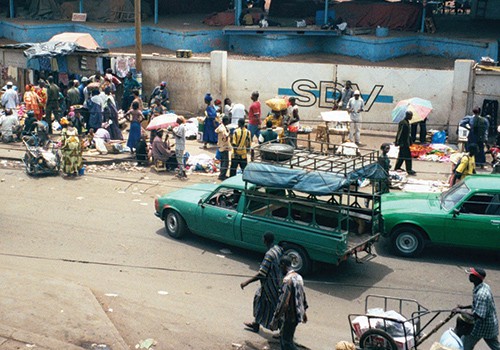How Cities Reshape Food Systems
The explosive growth of cities and the rapid emergence of an urban middle class are driving changes in food production and consumption in developing countries: A new book chapter by FSP team.
By Minten, B., Reardon, T., Chen, K.
 This book chapter: Chapter 5: Agricultural value chains: How cities reshape food systems, links African urban growth with food system changes.
This book chapter: Chapter 5: Agricultural value chains: How cities reshape food systems, links African urban growth with food system changes.
Photo: Véronique Thériault, Bamako Street Scene, Mali
KEY MESSAGES
- Rapid growth of cities is driving change in agricultural value chains—key factors include increased commercial flows of agricultural goods, diet transformation, and the large role of commercial markets in meeting urban food needs.
- Megacities in developing countries are transforming value chains for high-value crops and for traditional staple food crops.
- The “quiet revolution” affecting staple-food value chains is increasing productivity through:
- Increased investment in technology and modern inputs, including fertilizers and improved seeds, by farmers close to cities.
- Use of mobile phones by farmers to better position themselves in markets.
- Greater vertical integration resulting from the growing scale of midstream and retail sections of the value chain—such as cold storage, rice mills, and supermarkets.
POLICY AND RESEARCH NEEDS
- What is the impact of the food value chain segments beyond the farm gate on employment, prices, and food security for both rural and urban populations?
- What role are urban markets playing in shaping agricultural value chains?
- How are evolving agricultural value chains affecting opportunities for small producers?
- How can governments best kick-start changes in agricultural value chains, including through investment in road and communications infrastructure, reliable electricity grids, and agricultural research and development?
T., Chen, K. (2017), Chapter 5: Agricultural value chains: How cities reshape food systems, Global Food Policy Report 2017, International Food Policy Research Institute, pp. 42-49.
With thanks to the Feed the Future Innovation Laboratory for Food Security Policy, funded by the Bureau of Food Security of USAID.



 Print
Print Email
Email




